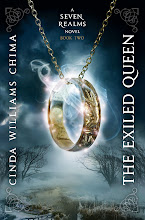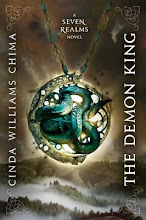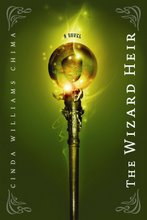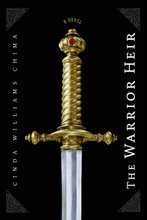Do you ever find yourself sounding like your parents? It’s scary, man.
A year or so ago I did a bookstore appearance in Frisco, Tx. An aspiring writer who’d friended me online was there with her mother. During the Q&A, the mom raised her hand and said, “Don’t you think that someone who wants to be a writer should also get a degree in a field where they can actually make a living? To fall back on, I mean?” During this, her daughter glared at her mother in a way that said, My life is over, and it’s your fault.
“Great,” I said. “There’s no way I can answer this without getting into trouble.”
Last week, a boy emailed me to say, “I’m in middle school, and I would like to be a writer when I grow up. Can you tell me, on average, how much writers make in a year?” The boy was planning ahead for poverty.
And then, recently, at a writing workshop, a mother told me that her eleven-year-old daughter was a talented writer. She asked for my advice.
“Well,” I said, “it’s great that she’s already writing. She should keep that up, and read as much as possible, too. And she should choose a career that will support her while still allowing her time and energy to write.”
The mother looked taken aback, like I was in the business of killing dreams and kittens. “Don’t you think that would be very difficult?” she said. “To try to write while working a day job?”
Well, yes, I thought. It is difficult. And exhausting. I speak from experience.
“I want her to be able to focus on writing,” the mother went on. “We’re more than willing to support her until she gets established.”
As if that wouldn’t be a high pressure situation.
I’m not exactly a model of career planning and efficiency. I mean, really—my first degree is in philosophy. Finding it difficult to secure employment as a philosopher, I took a post-bacc and master’s in nutrition and practiced as a dietitian for years.
I began to write, yes, as a second job, although in the beginning I could have worked retail and made more reliable money.
I recommend that beginning writers plan for a day job for several reasons. Firstly, of course, to buy food, shelter, Internet access, books, and subscriptions to writing magazines. Secondly, day jobs provide an alternative place to achieve those small successes that keep us going. Maybe you’ve just received your twenty-fifth rejection for a novel that took three years to write. But maybe you’ve also completed a fabulous project at work or seen understanding kindle in a student’s eyes.
Planning ahead may mean you can choose a career that doesn’t suck up your time and wring out your soul, leaving you in no condition to write. Professionals are better able to request flexible schedules and can make more money doing part time work. Some writers choose to work in a field aligned with writing—teaching English, say, or business writing. Others prefer the perspective of doing something completely different. For some, the day job is raising children when someone else in the household brings in an income.
Don’t overlook the fact that other careers can provide you with grist for the writing mill. Lawyers and doctors often turn to writing fiction and nonfiction related to their areas of expertise.
But the most important reason for having a day job as a writer is that it prevents the quest for money from killing your love of the craft. It allows you to enjoy your writing, to follow the muse wherever it takes you. It gives you the freedom to become the best writer you can be without feeling like you constantly have to hustle for a buck.
It’s bad enough to have your work rejected without facing eviction as a result. And it’s easy to devalue your writing when you are desperate for a sale and it’s not happening. There’s so much we don’t control about success as a writer. Talent and hard work are necessary but not sufficient for success. Desperation can squeeze the joy right out of your art.
That said, if you want to transition into writing full time, do your homework, set up a plan and work it. It also helps to marry someone with insurance.
I used to do a lot of freelancing, which brought in some money. I made a conscious decision to turn away from that and focus on novels, even though I knew there was a chance I would never make a dime. But I knew that freelancing would always be a part time gig. I could never make enough freelancing to leave my day job.
That was in 2002. My first novel was published in 2006. My fourth book is coming out this week.
I left my day job in May, 2008.
Wednesday, December 23, 2009
Friday, December 11, 2009
Dangerous Australia
There are no poisonous snakes in New Zealand, nor scorpions nor deadly spiders, either. That’s a plus, in my eyes.
 Australia is different—it is home to more poisonous snakes, frogs, spiders, lizards, stingrays, jellyfish, vertebrate fish, and other dangerous creatures than anywhere else on earth.
Australia is different—it is home to more poisonous snakes, frogs, spiders, lizards, stingrays, jellyfish, vertebrate fish, and other dangerous creatures than anywhere else on earth.It’s become politically incorrect in the U.S. to demonize animals—even dangerous predators—as vicious killers. We even tend to romanticize businesslike kill-or-be-killed lifestyles. Nothing personal, but I’m above you on the food chain.
Australians, on the other hand, seem to embrace the dangers of life in the bush with relish.
It reminds me of the old Crocodile Hunter show—“These are the most DANGEROUS animals in the world!” And it was true in his case—he died of a stingray sting in the chest.
While in Sydney, I stopped in at Galaxy Bookstore, a specialty sci-fi and fantasy bookstore. I was chatting with one of the clerks, and said I was just beginning a tour of Australia.
“Watch yourself out there,” she advised me. “There’s lots of snakes.” Meaning, don’t let down your guard, even though right now you’re in the middle of a major metropolitan area.
Turned out she knows what she’s talking about. She’s specializing in reptile studies at university. Seems like a good field to go into down under.
We visited Sydney Wildlife World, which was teeming with deadly creatures—dangerous birds, snakes, lizards, insects—you name it. In case you missed anything, lurid warning signs highlighted the most dangerous creatures on display.
Not enough worries? Across the way was the Sydney Aquarium, displaying deadly denizens of the deep.
Whatever the topic, it seemed to stray onto deadly subject matter. The guide at the seemingly low-risk koala breakfast explained to us the difference between poison and venom. “Venom works through the bloodstream,” she said. “It’s injected. Poison, on the other hand, can be ingested in different ways. We can touch a poison frog, eat a poison mushroom, breath in poisonous gases or brush a poison plant. Got that?”
Remember the Foolhardy Family? They wouldn’t last a minute in Australia. Get past the fauna, and the flora and the terrain is dangerous, too—blistering deserts, unpredictable seas and shipwreck coasts, bottomless crevasses, unstable cliffs, and poisonous plants. Of all the rogue introduced plants, it seems the only ones that have caught on are the noxious ones.
 I’m a writer. My fertile imagination tells me there’s danger everywhere. I hiked through Alaska, singing at the top of my lungs, to drive off the bears. I walked through Florida wetlands scanning the underbrush for wolf spiders and alligators. I hiked through the “national forest” – ha! – desert in New Mexico, my eyes darting to either side, searching for rattlesnakes.Never thought I'd have to watch out for the lizard in the laundry room!
I’m a writer. My fertile imagination tells me there’s danger everywhere. I hiked through Alaska, singing at the top of my lungs, to drive off the bears. I walked through Florida wetlands scanning the underbrush for wolf spiders and alligators. I hiked through the “national forest” – ha! – desert in New Mexico, my eyes darting to either side, searching for rattlesnakes.Never thought I'd have to watch out for the lizard in the laundry room!My advice: Watch yourself out there—it’s a dangerous world.
Monday, December 7, 2009
I'll be at Barnes & Noble Woodmere December 14!!
I'll be signing books at the Barnes & Noble at Eton Collection for the Shaker Heights Middle School Bookfair on Monday, December 14, from 7 to 9 p.m. Other local authors will be there. Come hang out!
Subscribe to:
Comments (Atom)

















